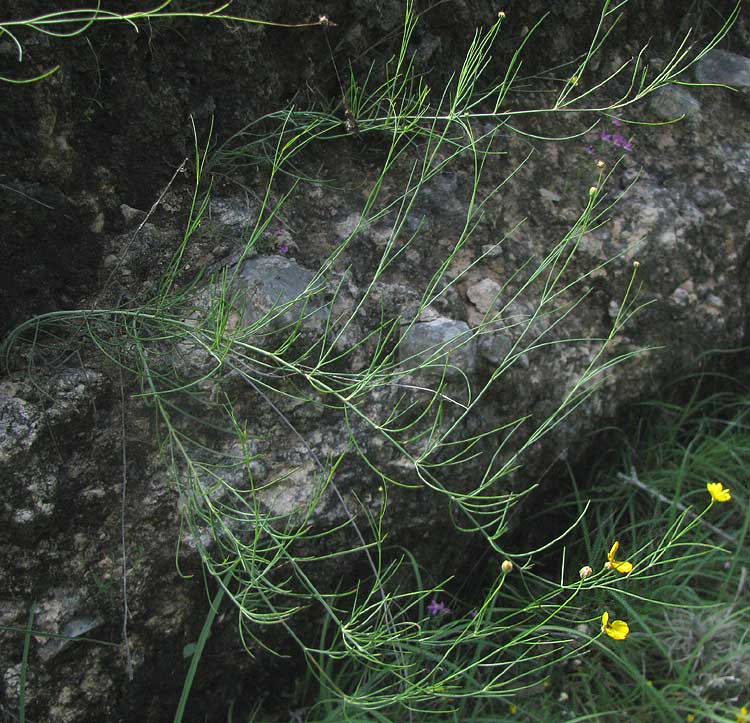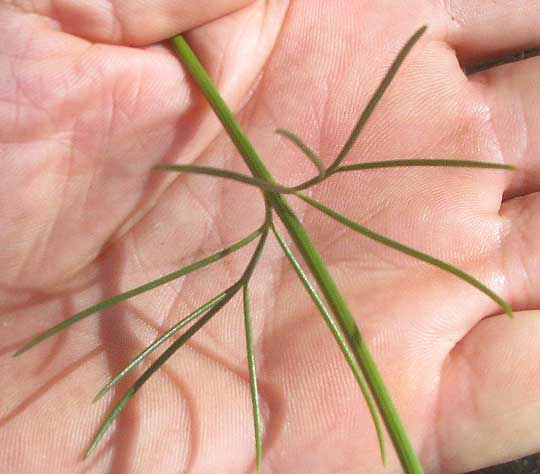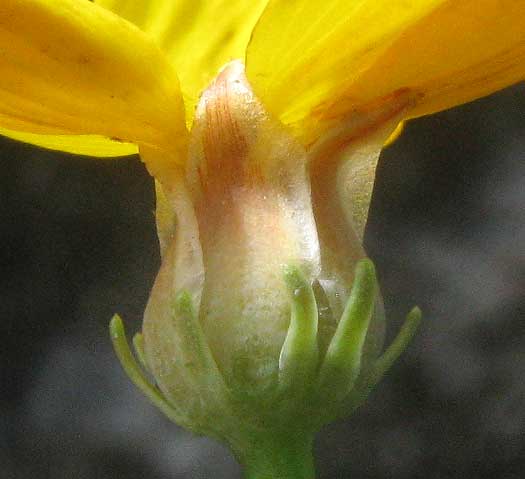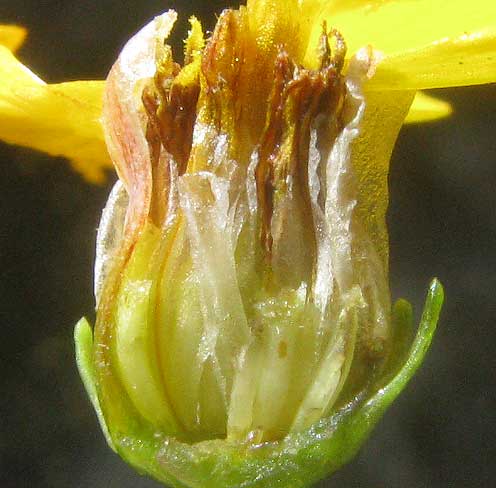Excerpts from Jim Conrad's
Naturalist Newsletter

from the July 7, 2013 Newsletter issued from the Frio Canyon Nature Education Center in the valley of the Dry Frio River in northern Uvalde County, southwestern Texas, on the southern border of the Edwards Plateau; elevation ~1750m (~5750 ft); N29.62°, W99.86°; USA
SLENDER GREENTHREAD
So many wildflowers similar in appearance are flowering after the rain of two weeks back that it's hard to keep them all straight, especially all the yellow-blossomed members of the Composite or Daisy Family. However, when I saw a certain one this week -- despite it being yet another yellow-blossomed member of the Composite Family -- I knew I'd never encountered it before. You can see it above, leaning from a fissure in a shaded limestone cliff.
Having something new, immediately I set about "doing the botany":
The plant's leaves arose two per stem node, opposite one another. Many of the upper leaves were mere slender filaments but some lower ones were deeply pinnately lobed, the lobes being threadlike, as shown below:

From above, the flower heads show nothing special, but from the side suddenly you see a very interesting field mark, as shown below:

The yellow flowers arise from within a very unusual involucre -- the bowl-like thing in most flowers composed of green, sharp-pointed scales or bracts that overlap one another like roof shingles. In the above photo we see that the scales of this flower head's involucre are of two very different types. At the bottom there's a row of several green, slender, blunt-tipped scales, or "phyllaries," then above them arise another series of very much larger, pale phyllaries, the tips of which extend up between the yellow corollas of the head's ray flowers. These larger, inner phyllaries are slightly pink with thin, white margins. Having two rows of such different-looking phyllaries is an excellent field mark, a very unusual but not unheard-of arrangement.
Breaking open a head, it was easy to see that between each disk flower a thin, cellophane-like scale or bract partly enveloped the developing ovary and lower part of the corolla, as seen below:

With such a collection of distinctive field marks it was easy to "key this species out" to THELESPERMA SIMPLICIFOLIUM, in wildflower books commonly called the Slender Greenthread, as well as Navajo Tea, Hopi Tea, Indian Tea and Cota. The online Flora of North America describes its habitat as "Openings in oak/juniper woodlands or desert scrub, usually on limestone," but here so far I've only seen it on limestone cliff faces. Slender Greenthread mostly occurs in arid northern Mexico but extends into the US in Texas and New Mexico.
Nine Thelesperma species are found in North America, all restricted to dry habitats and mostly at home in the US south-central states. As some of the plant's common names imply, several Thelesperma species, including our simplicifolium, have been used traditionally by various Native American groups as tea, referred to in English as greenthread tea. Our plants are so uncommon that I'd never pick them for use as tea, but I read that greenthread tea tastes something like standard green tea, with a very slight aromatic taste, and thus can be enjoyed without sweetener.
In fact, greenthread tea is sold commercially. You might enjoy browsing a web page produced by Oregon's Institute for Traditional Medicine describing how the various Thelesperma species are used, how the tea is prepared, and what compounds are found in it, at http://www.itmonline.org/arts/greenthread.htm.